
Gangtok rose to prominence as a popular Buddhist pilgrimage site after the construction of the Enchey Monastery in 1840. In 1894, the ruling Sikkimese Chogyal, Thutob Namgyal, transferred the capital to Gangtok. In the early 20th century, Gangtok became a major stopover on the trade route between Lhasa in Tibet and cities such as Kolkata (then Calcutta) in British India. After India won its independence from Britain in 1947, Sikkim chose to remain an independent monarchy, with Gangtok as its capital. In 1975, after the integration with the union of India, Gangtok was made India's twenty-second state capital.
Places of Interest
Enchey Monastery
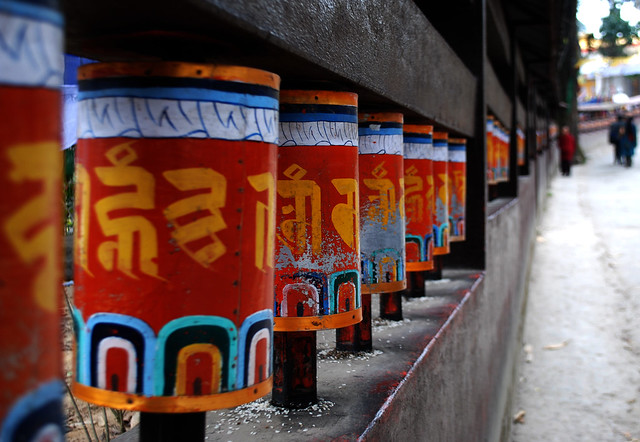 An important seat of the Nyingma order,
the Enchey Monastery meaning the Solitary temple, was originally built with the
solace that no other construction would be allowed near it is built on the site
blessed by Lama Druptob Karpo, a tantric master known for his flying powers.
This 200-year-old Monastery has in its premises images of god, goddesses and
other religious objects. Every year around January 'Chaam' or religious masked
dance is performed with great fanfare for two days. it is situated adjoining
the Sinolchu Tourist Lodge, 3 kms from Gangtok Town.
An important seat of the Nyingma order,
the Enchey Monastery meaning the Solitary temple, was originally built with the
solace that no other construction would be allowed near it is built on the site
blessed by Lama Druptob Karpo, a tantric master known for his flying powers.
This 200-year-old Monastery has in its premises images of god, goddesses and
other religious objects. Every year around January 'Chaam' or religious masked
dance is performed with great fanfare for two days. it is situated adjoining
the Sinolchu Tourist Lodge, 3 kms from Gangtok Town. Flower Show
White Hall, Close by the White Memorial Hall and just below the Palace Ridge park is the more recent Flower Show Hall. In recent years this show has become quite popular and famous as there are flower exhibitions throughout the year in accordance with the seasons and the flowers in bloom.
Do-Drul Chorten ( Stupa)
 The Do-Drul Chorten or Stupa was built by
the Venerable Trulshi Rimpoche, head of the Nyingma order of Tibetan Buddhism
in 1945. Inside this stupa, there are complete mandala sets of Dorjee Phurba
(Bajra Kilaya), a set of Kan-gyur relics ( Holy Books), complete 'Zung'(
mantras) and other religious objects. Around this Chorten, which is one of the
most important stupas in Sikkim, are 10 Mani-Lhakor( prayer wheels). These
prayer wheels are turned by the devout Buddhist while chanting "Hail to
the jewel in the Lotus", to invoke the Buddhisattva. The Chorten is
surrounded by Chorten Lakhang, where there are two huge statues of Guru
Rimpoche (Guru Padmasambhava).
The Do-Drul Chorten or Stupa was built by
the Venerable Trulshi Rimpoche, head of the Nyingma order of Tibetan Buddhism
in 1945. Inside this stupa, there are complete mandala sets of Dorjee Phurba
(Bajra Kilaya), a set of Kan-gyur relics ( Holy Books), complete 'Zung'(
mantras) and other religious objects. Around this Chorten, which is one of the
most important stupas in Sikkim, are 10 Mani-Lhakor( prayer wheels). These
prayer wheels are turned by the devout Buddhist while chanting "Hail to
the jewel in the Lotus", to invoke the Buddhisattva. The Chorten is
surrounded by Chorten Lakhang, where there are two huge statues of Guru
Rimpoche (Guru Padmasambhava).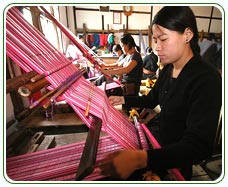
Handloom and Handicrafts centre
It is now known as the Directorate of Handicrafts and Handlooms as well as the Government Institute of Cottage Industries. Started during the time of the Chogyals of Sikkim, as a venture to protect and propagate the craft and skills of local and village artisans, it has become on t of the major attractions for people visiting Sikkim where traditional handcrafts, furniture, handlooms carpets and other products can be viewed and also purchased . A word of caution to the innocent guest. It is better to check whether there is a government holiday or not as the G.I.C.I. is closed on Sundays, all government declared holidays, second Saturdays and the odd unforeseen holidays.
Namgyal Institute Of Tibetology: -Amidst a serene surrounding of oak, birch and ash lies the unique organization established in1958. Built in traditional style, the namgyal Institute of Tibetology promotes research in Mahayana Buddhism and the language and tradition of Tibet. It has one of the world’s largest collections of rare books and manuscripts on Mahayana Buddhism. The Institute also has a retail outlets where related books and commercially produced religious art and craft of Tibet can be bought.

Saramsa Garden
About 14 kms from Gangtok is the Saramsa Garden, the home of Sikkim's most exotic orchids and other rare tropical and temperate plants. Established and maintained by the Department of Forest, it is an excellent recreation and picnic spot.
Rumtek Monastery
24 Kms. from Gangtok is the awe -inspiring
Rumtek Monastery, the world Dharma chakra Centre and the seat of His Holiness,
the Gyalwa Karmapa, who is the head of the Kagyupa order of Tibetan Buddhism.
Behind the main monastery is the lavishly decorated Karmae Nalanda Institute of
Buddhist Studies, which attracts students from the world over. Opposite the
entrance to the Institute is a small hall featuring a beautiful jewel studded
Chorten the Golden Stupa, which contains the ashes and remains of His Holiness
the xvi Gyalwa Karmapa. According to legend, it is believed that after years of
meditation, the first Karmapa was said to have been visited by ten thousand
fairies who came to congratulate him each of whom offered a strand of her hair
as a gift. These were said to have been woven into a black hat, which was
passed down and is still at the Rumtek Monastery today. It is said that unless
held on to by the wearer (who of course, cannot be anyone else but the Karmapa)
or kept in a box, the hat would fly away.
Jawaharlal Nehru Botanical Garden
Very close by to Rumtek Monastery, and maintained by the parks and Gardens unit
of the Forest Department of the Government of Sikkim, the Garden is an
enchanting and soothing experience among the lush green vegetation, rare plants
and trees and certain species of Himalayan flowers and Orchids.
Ganesh Tok
It is situated on a ridge at a distance of 7 kms from Gangtok. From this Spot one can get birds eye view of sprawling Gangtok town, while across the hills Mt. Khang-chen-Dzonga and Mt. Siniolchu loom over the horizon. A cafeteria serves hot tea, coffee and snacks. The view from here is truly breathtaking with snow peaks providing the perfect backdrop for a panoramic view of Gangtok town.
Dedicated to Lord Ganesh, the temple is located at an altitude of 6500 feet on a panoramic hilltop. At present the temple is surrounded by a beautiful pinetum, Bulbylay Zooligical Park and a smriti-van, wherein visitors plant saplings in the memory of their dear departed.
Baba Mandir
 The temple lies on the road between the
Nathula and the Jelepla Pass and is visited by hundreds of people each day. The
temple is believed to have wish-fulfilling powers and many devotees leave
behind bottles of water at the temple which they pick up on their way back as
holy water. On Sundays a ‘langar’ is run at the temple which provides free
meals to the visitors.
The temple lies on the road between the
Nathula and the Jelepla Pass and is visited by hundreds of people each day. The
temple is believed to have wish-fulfilling powers and many devotees leave
behind bottles of water at the temple which they pick up on their way back as
holy water. On Sundays a ‘langar’ is run at the temple which provides free
meals to the visitors. The legend of Baba goes back 35 years when Sepoy Harbhajan Singh of the 23rd Punjab Regiment went missing while leading a pack of mules from his battalion stationed at Tukla to Deng Dhukla, both remote areas located in East Sikkim. A manhunt was launched and it took the army three days to find his body. It is believed that he himself led the soldiers to the site. Soon after, soldiers in the regiment started reporting that Baba had been appearing in their dreams and directing that a shrine be built in his memory. A Samadhi was raised in his memory and believers say that even today Baba visits every night, puts on his uniform and does his rounds. He is worshipped as a saint who grants boons and guards the lives of soldiers posted along the border.
Each year in September Baba takes his annual holiday and travels back to Kapurthala, his hometown. People gather in large numbers and line the route that Baba will take to offer flowers and prayers. A berth on a train is reserved in his name and two orderlies accompany him on the journey. The legend of this Sepoy-Saint grows stronger with each passing day.
Bakthang Falls
20 minutes drive from Gangtok is Bakthang Water Falls along the 31 A National Highway leading to North Sikkim. It originates from Ratey Chu, the main water source of Gangtok area. Suggested to visit with a view to relax and to take photographs.
It takes the passenger to the highest point of the city of Gangtok, covering the distance of about 1 km in only seven minutes. Each cabin accommodates 24 passengers. The lower terminal station is located at Deorali Market, the intermediate terminal at Nam-Nang and the upper terminal station is below the Secretariat (Tashiling). One can truly enjoy the panoramic view and thrilling rise as the Ropeway goes over the City.
Gonjang Monastery
Gonjang Monastery near Tashi View Point was established in the year 1981. The founder is H.E. Tingkye Gonjang Rimpoche. He was recognised as an incarnation of Yolmo Terton Ngakchang Shakya Zangpo, a 15th century Nyingmapa Terton. The monastery follows Jangter tradition of Nyingmapa school of Tibeten Buddhism.
The temple dedicated to Lord Hanuman is
situated at an altitude of 7200 feet at a distance of about nine kilometres
uphill from Gangtok on a blissfully calm and quiet hilltop. Popularly known as
a wish fulfilling temple, it is maintained by the resident units of the Indian
Army and contributions from the local people. The whole complex has been
recently renovated and a lot of public utilities provided.
Apart from the clear view of the peaks surrounding Mount Khangchendzonga, some portions of Gangtok town, one also gets a bird's eye view of the Selep water works, which supplies drinking water to Gangtok. Adjacent to this area is Lukshyama, the royal cremation ground having stupas and chortens. Here the mortal remains of the erst-while royal family members of Sikkim are cremated.
Apart from the clear view of the peaks surrounding Mount Khangchendzonga, some portions of Gangtok town, one also gets a bird's eye view of the Selep water works, which supplies drinking water to Gangtok. Adjacent to this area is Lukshyama, the royal cremation ground having stupas and chortens. Here the mortal remains of the erst-while royal family members of Sikkim are cremated.

Himalayan (Bulbuley) Zoological Park
8 kms away from Gangtok is the Himalayan Zoological Park which covers an area of 205 hectares. This area is also known as Bulbulay. Located just above Ganesh Tok, the park is home to a number of animals living in open enclosures in their natural habitat.
If you are lucky you might see the Red Panda, Sikkim’s state animal, the barking Deer, Tibetan wolves, panthers, Civet cats or even the Himalayan Black Bear. The Park also has ‘Kush’ and ‘Urbashi’, a snow leopard pair living in. It’s definitely worth a visit.
M.G. Marg
 M.G. Marg, the main street of Gangtok town is a great place to chill out in the
evenings. The country's first litter and spit free zone, no vehicular traffic is
allowed into the Marg. You can sit at the Titanic Park and listen to the piped
in music played for the listening pleasure of visitors or just walk down the
Mall and take in the carnival like atmosphere, especially during the tourist
season. The Mall is lined with shops on both sides of the road so shopping
becomes an added pleasure.
M.G. Marg, the main street of Gangtok town is a great place to chill out in the
evenings. The country's first litter and spit free zone, no vehicular traffic is
allowed into the Marg. You can sit at the Titanic Park and listen to the piped
in music played for the listening pleasure of visitors or just walk down the
Mall and take in the carnival like atmosphere, especially during the tourist
season. The Mall is lined with shops on both sides of the road so shopping
becomes an added pleasure. M.G. Marg is also the venue for the annual Gangtok Food and Culture festival held in December each year when Sikkim's multi-cultural cuisine, along with music and dance performances are showcased. This event attracts a large number of locals and tourists each year.
 Menmecho Lake
Menmecho LakeUpon covering a distance of 64 kms from Gangtok via Sherathang (6 kms short of famous Nathula Pass) one comes across a marvellous snow fed water body called Menmecho Lake (altitude 13,000 feet). Surrounded by lush green forest and typical reddish alpine grass cover, it is the source of the river Rangpochu.
Larger in size than Tsomgo lake, it is full of trout fish. Impressed by its calm and quiet atmosphere and rare beauty, one can spend hours in splendid isolation.
 Sa-Ngor Monastery
Sa-Ngor MonasteryIt is a Tibeten refugee monastic institution established in 1961 by his Eminence Luding Khen Rimpoche, Head of Ngorpa, sub-set of the Sakya Order, with the blessings of H.H. Sakya Trizin and H.H. The Dalai Lama. This is the only monastery of the sakya Order of Tibeten Buddhism in Sikkim. It is located on a beautiful hill top at a distance of 5 kms from Gangtok town.
Tashi View Point
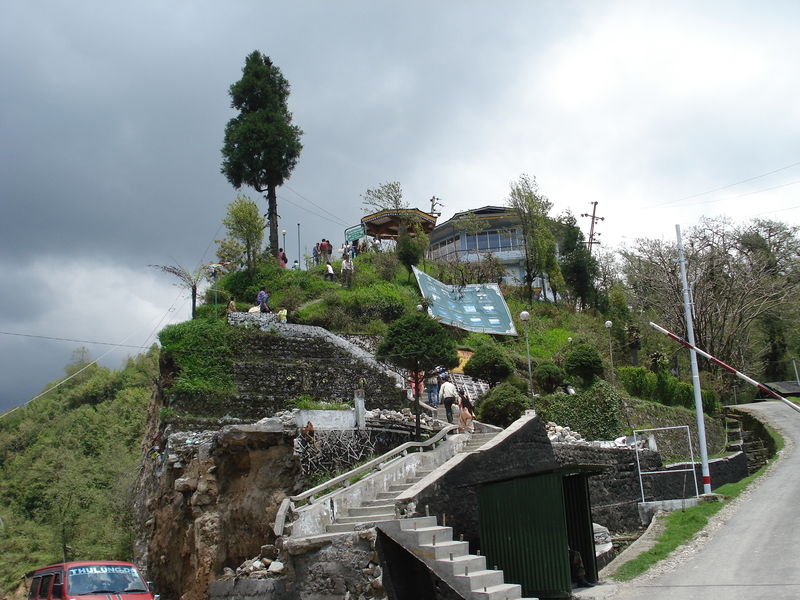 Situated along the North Sikkim Highway,
it is only 8 kms from Gangtok. From this point one gets a breath taking view of
Mt. Khangchendzonga, one of the most graceful peaks in the world. An
Observatory Tower, Cafeteria and Public amenities have also been recently
added. Ideal time to visit is early in the morning. One can also catch a
glimpse of the Phodang and Labrang monasteries on the opposite hill. There is a
park just above the View Point where one can have a little picnic or visit the
cafeteria for hot coffee, momos and other snacks.
Situated along the North Sikkim Highway,
it is only 8 kms from Gangtok. From this point one gets a breath taking view of
Mt. Khangchendzonga, one of the most graceful peaks in the world. An
Observatory Tower, Cafeteria and Public amenities have also been recently
added. Ideal time to visit is early in the morning. One can also catch a
glimpse of the Phodang and Labrang monasteries on the opposite hill. There is a
park just above the View Point where one can have a little picnic or visit the
cafeteria for hot coffee, momos and other snacks.Tsomgo Lake
 38 km from Gangtok and at an altitude of
12,400 ft, the ethereally beautiful Tsomgo lake is a must on every visitors
itinerary. A winding road through rugged mountain terrain and sharp cliffs
takes you to Tsomgo, which means source of the water in Bhutia language. The
lake derives its water from the melting snows of the mountains surrounding the
lake. Of legendary beauty, the lake looks different at different seasons. In winter
the placid lake remains frozen with the area around it covered in snow while in
late spring the profusion of flowers in bloom adds a riot of colours around the
lake.
38 km from Gangtok and at an altitude of
12,400 ft, the ethereally beautiful Tsomgo lake is a must on every visitors
itinerary. A winding road through rugged mountain terrain and sharp cliffs
takes you to Tsomgo, which means source of the water in Bhutia language. The
lake derives its water from the melting snows of the mountains surrounding the
lake. Of legendary beauty, the lake looks different at different seasons. In winter
the placid lake remains frozen with the area around it covered in snow while in
late spring the profusion of flowers in bloom adds a riot of colours around the
lake. The lake is associated with many myths and legends and is revered by the Sikkimese as sacred. It is believed that in olden times, Buddhist monks would study the colour of the water of the lake to forecast the future.
The lake is also of special significance
for the Jhakris [faith healers] of Sikkim who congregate here annually on Guru
Purnima, which coincides with the festival of Raksha Bandhan, from all over the
state to offer prayers.
For the tourist a visit to the lake offers a wonderful outing. Rides on colourfully decorated yaks and mules are offered at the lake site, which also has a variety of eating stalls serving snacks and beverages. Snowboots and gumboots can be hired here.
Tsomgo lake is open for both Indian and foreign nationals, however foreign visitors have to be in a group of two or more and have to apply for a visitors permit through a registered travel agency.
Nathula Pass
For the tourist a visit to the lake offers a wonderful outing. Rides on colourfully decorated yaks and mules are offered at the lake site, which also has a variety of eating stalls serving snacks and beverages. Snowboots and gumboots can be hired here.
Tsomgo lake is open for both Indian and foreign nationals, however foreign visitors have to be in a group of two or more and have to apply for a visitors permit through a registered travel agency.
Nathula Pass
 The Nathula Pass is situated in the state
of Sikkim near the Chinese border. It is located along the ancient Silk Route
and it is a popular tourist destination for many people across the country. The
Nathula region is a border trading post for India and China. Many pilgrims from
the country of Tibet pass through the Nathula Pass to visit the numerous
religious sites that are present here. The place can be visited only on certain
days of the week and there is a restriction on the number of vehicles that can
travel to the place on any particular day. Foreign tourists are also not
allowed to visit the place and they can travel only up to the Tsongo Lake.
The Nathula Pass is situated in the state
of Sikkim near the Chinese border. It is located along the ancient Silk Route
and it is a popular tourist destination for many people across the country. The
Nathula region is a border trading post for India and China. Many pilgrims from
the country of Tibet pass through the Nathula Pass to visit the numerous
religious sites that are present here. The place can be visited only on certain
days of the week and there is a restriction on the number of vehicles that can
travel to the place on any particular day. Foreign tourists are also not
allowed to visit the place and they can travel only up to the Tsongo Lake. There are numerous waterfalls that are located along the route from Gangtok to Nathula. The drive from Gangtok can be an exhilarating experience as one can get a view of many snow clad peaks along the way. One has to climb up a set of steps to reach the pass itself and you can engage in conversation with both Indian and Chinese soldiers. SUVs that have permits are the only vehicles that are allowed in the region.
Places to Wine & Dine
 Cafe Live & Loud - Located a little above MG Marg in the Enchey Compound is Cafe
Live and Loud which
is one of the favourite hangouts of the locals and travellers. The Cafe
occupies the entire first floor of the building and is divided into two
sections for cafe and restaurant. The place is known for the live gigs that its
hosts and events on special days.
Cafe Live & Loud - Located a little above MG Marg in the Enchey Compound is Cafe
Live and Loud which
is one of the favourite hangouts of the locals and travellers. The Cafe
occupies the entire first floor of the building and is divided into two
sections for cafe and restaurant. The place is known for the live gigs that its
hosts and events on special days.  Taste of Tibet - Taste of Tibet is one good place to try momos and other Tibetan dishes like
thukpa, gyathuk and thentuk. A short stairway beside the road at New Market
will lead you to the Restaurant. The
interior of the Restaurant is cosy and comfortable with few private cabinets
beside the view facing windows.
Taste of Tibet - Taste of Tibet is one good place to try momos and other Tibetan dishes like
thukpa, gyathuk and thentuk. A short stairway beside the road at New Market
will lead you to the Restaurant. The
interior of the Restaurant is cosy and comfortable with few private cabinets
beside the view facing windows.  Alu Chewra - Alu Chewra's literal translation would be potato with
chips. This is a local junk food that everyone in Gangtok loves. While you are
in Gangtok don’t forget to try this spicy snack. Two local hawkers have their
permanent stall of Alu Chewra at Lal Bazaar behind the vegetable section.
Alu Chewra - Alu Chewra's literal translation would be potato with
chips. This is a local junk food that everyone in Gangtok loves. While you are
in Gangtok don’t forget to try this spicy snack. Two local hawkers have their
permanent stall of Alu Chewra at Lal Bazaar behind the vegetable section.
Indulge - Indulge is a karaoke bar and restaurant and is a good
place to hang out with friends and have fun. The interior of the restaurant is done
wonderfully with sophisticated taste. It also serves Italian, Continental
and local dishes.
 Little Italy - Little Italy is located in Deorali town and is a wonderful
place to hang out and dine. The place is crowded in the weekends with the young
crowd of Gangtok gathered to have fun. The place serves delicious food with
live gigs on the background.
Little Italy - Little Italy is located in Deorali town and is a wonderful
place to hang out and dine. The place is crowded in the weekends with the young
crowd of Gangtok gathered to have fun. The place serves delicious food with
live gigs on the background. Cacao - Cacao is one of the popular cafes in Gangtok. The
Cafe is located at the MG Marg, right beside
the pedestal. Cacao serves delicious bakery products and lovely coffee. Indulge
in their yummy breakfast or the sumptuous chicken and ham sandwich, whatever it
may be the options are incredible. But the best part of the Cafe is the open
deck or the balcony on the first floor. One can have a nice view of the new
market from here and catch up with all the action on the road.
Cacao - Cacao is one of the popular cafes in Gangtok. The
Cafe is located at the MG Marg, right beside
the pedestal. Cacao serves delicious bakery products and lovely coffee. Indulge
in their yummy breakfast or the sumptuous chicken and ham sandwich, whatever it
may be the options are incredible. But the best part of the Cafe is the open
deck or the balcony on the first floor. One can have a nice view of the new
market from here and catch up with all the action on the road.
Bakers Café - Bakers Cafe is located right at the Mall Road, MG Marg and
is one of the places worth trying. The Cafe is built in western style with nice
interior. You can also check out the notice board where they put up leaflets of
the events happening in town. The ambiance at the Cafe is great and it serves
some very tasty confectionery.
Pub 25 - Pub 25 is a great place if you want to indulge in beer
and other liquors. The pub boasts of the huge variety of cocktail and shooters
that it serves. The Pub also serves delicious multi-cuisine that includes
Indian, Chinese, Thai and Continental dishes.
For more information log on to our website: http://summithotels.in/index.htm
or follow us on facebook: http://www.facebook.com/summithotels
Twitter: https://twitter.com/SummitHotels
Call us:
Central Reservations Office:
Working Hours: 10.00am - 8.00pm
T - +91 353 2460241
M- +91 93320 80132, 93320 80133
E – info@summithotels.in

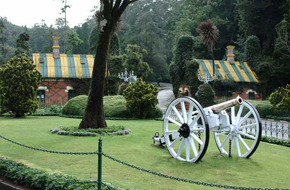

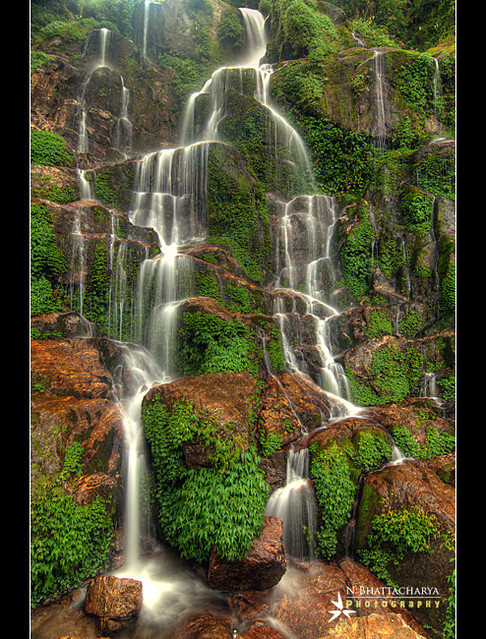





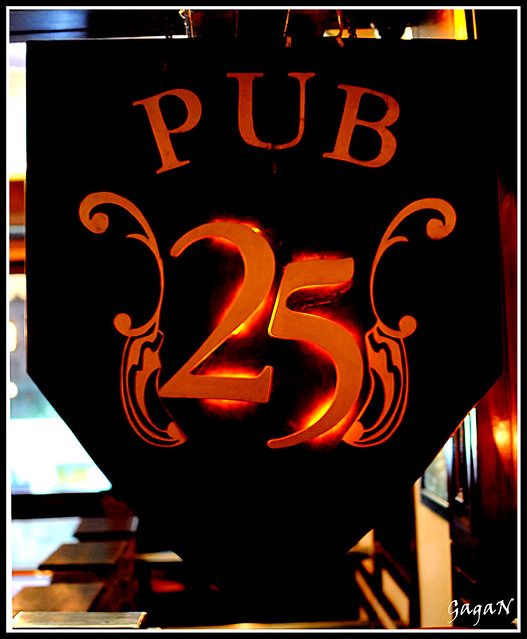
No comments:
Post a Comment